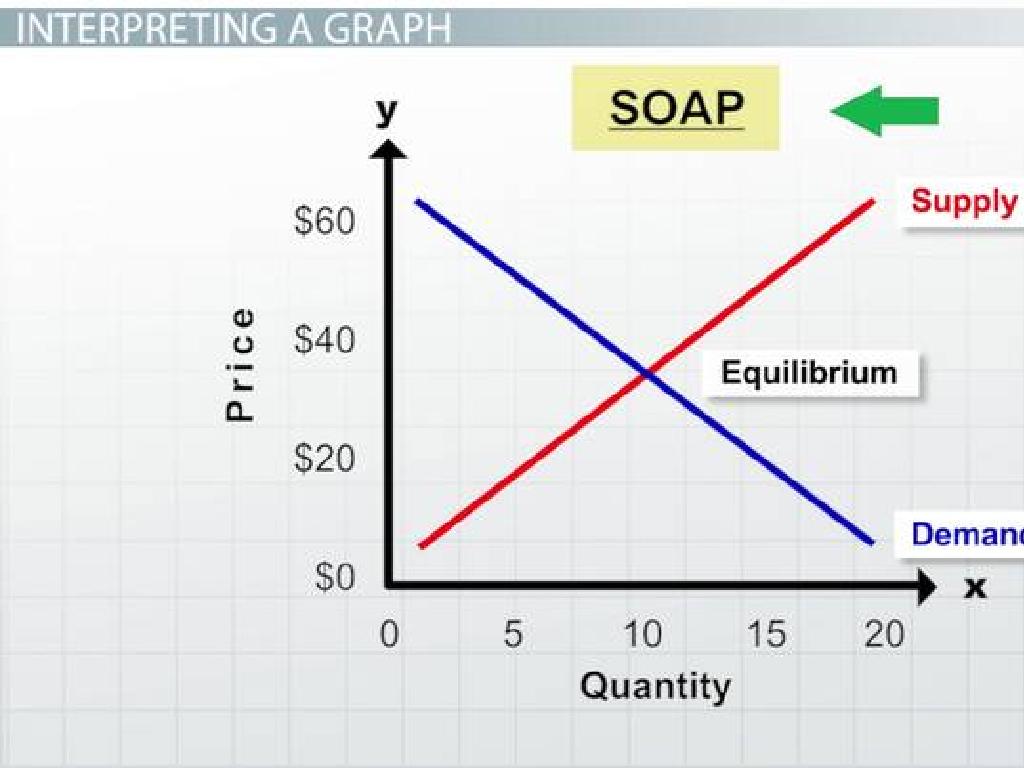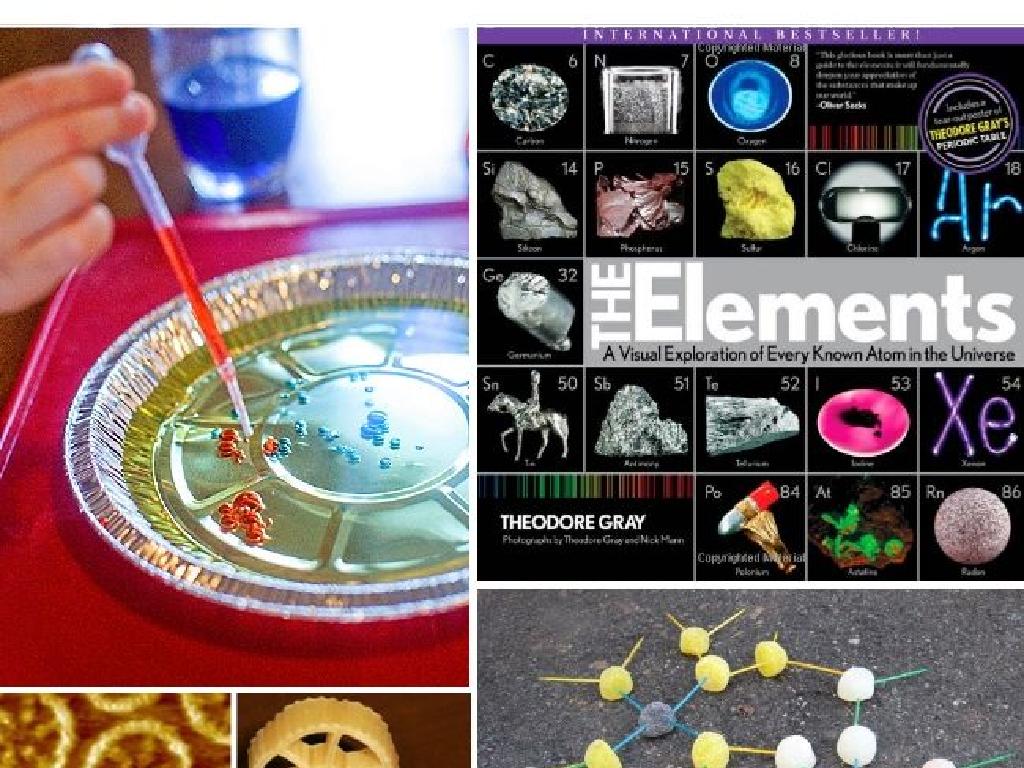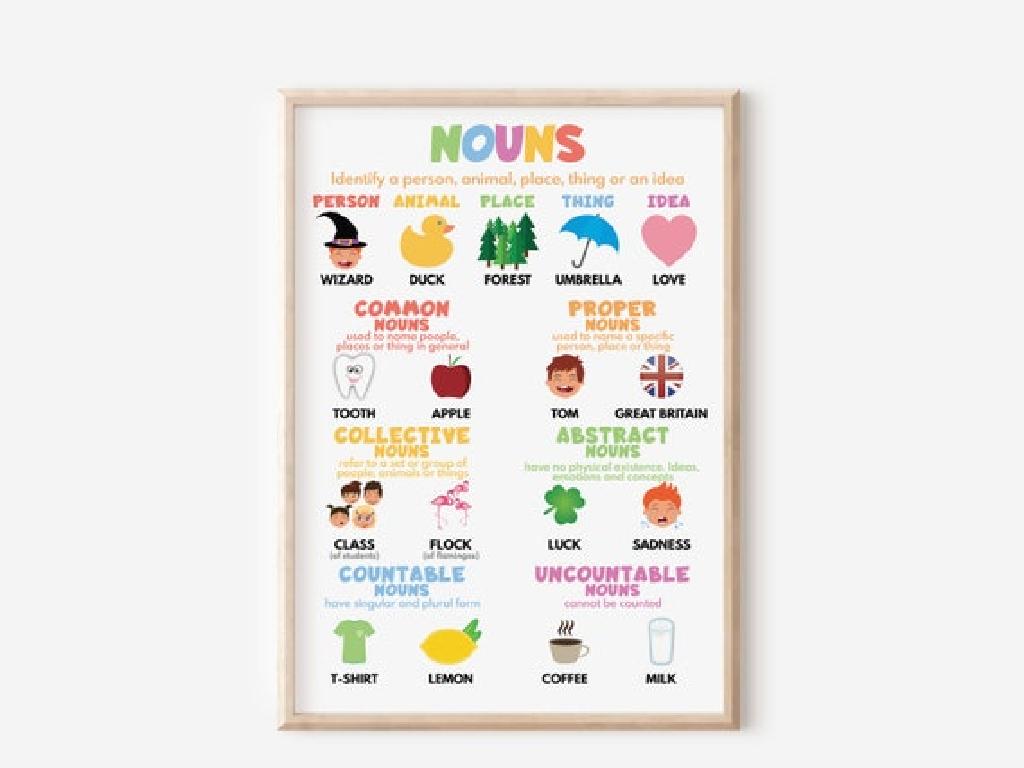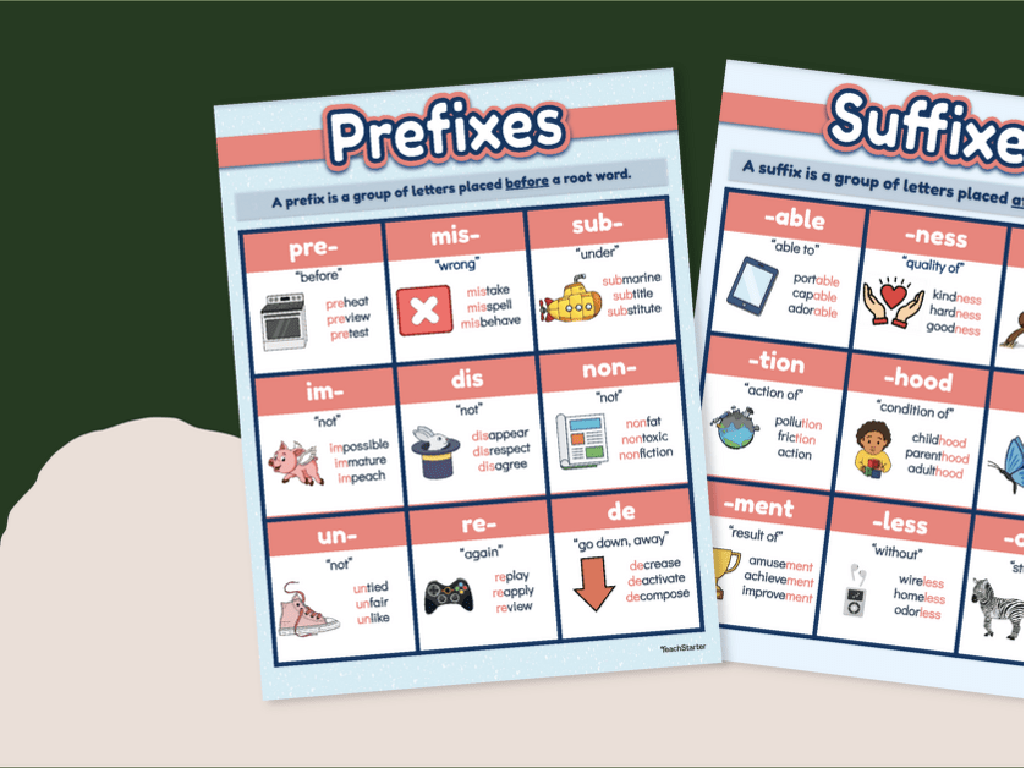Read Realistic Fiction With Illustrations
Subject: Language arts
Grade: Fifth grade
Topic: Literary Texts: Level 1
Please LOG IN to download the presentation. Access is available to registered users only.
View More Content
Welcome to Realistic Fiction!
– Understanding Realistic Fiction
– Stories that could happen in real life but are made up
– Key Characteristics
– Relatable characters, real-world settings, believable plots
– Why We Love These Stories
– They reflect our own experiences and emotions
– Exploring Through Illustrations
– Illustrations enhance the story and bring it to life
|
This slide introduces students to the genre of realistic fiction, which includes stories that mimic real life but are fabricated by the author. Emphasize that these stories have characters and settings that students can relate to, and the plots are often plausible. Discuss why realistic fiction can be enjoyable, as it allows readers to connect with the characters’ experiences and emotions. Highlight the role of illustrations in adding depth to the story and helping readers visualize the scenes and characters. Encourage students to think about their favorite stories and consider if they fall into this genre. This will set the stage for further exploration of realistic fiction texts and their illustrations.
Elements of Realistic Fiction
– Setting: Time and Place
– Where and when the story happens, like your school or home.
– Characters: Relatable People
– Characters with real emotions and actions, similar to friends and family.
– Plot: Everyday Life Stories
– The sequence of events that could happen to anyone.
|
This slide introduces students to the key elements of realistic fiction, a genre that tells stories about events that could happen in real life. The setting of a story provides the backdrop against which the narrative takes place and can include places familiar to the students, such as their school or neighborhood, and times that could be present, past, or near future. Characters in realistic fiction are developed to reflect real people with authentic emotions and behaviors, allowing students to connect and empathize with them. The plot revolves around everyday experiences that the students can relate to, which helps them to understand and predict story outcomes. Encourage students to think of their own experiences that could make for a realistic fiction story.
Exploring Characters in Realistic Fiction
– Create a character profile
– Note physical traits, personality, and habits
– Understand character motivations
– Ask why characters act the way they do
– Analyze relationships with others
– How do they interact with friends, family?
– Reflect on character development
– How do characters change throughout the story?
|
This slide aims to delve into character analysis within realistic fiction. Students will create detailed profiles for characters, noting their physical appearance, personality traits, and behaviors. Understanding motivations is key to comprehending why characters behave in certain ways and make the choices they do. Analyzing how characters relate to others in the story provides insight into their social dynamics and roles. Lastly, reflecting on character development over the course of the story helps students grasp the narrative arc and the themes of the text. Encourage students to use illustrations as visual clues to enhance their understanding of the characters.
Setting the Scene in Realistic Fiction
– How setting influences the story
– Setting shapes the plot and characters’ actions.
– Identifying story’s setting
– Look for time and place clues in the text and illustrations.
– The role of setting
– Setting creates the backdrop and mood for the story.
– Setting’s impact on characters
– Characters’ behavior is often a response to their environment.
|
This slide introduces the concept of ‘setting’ in realistic fiction and its significance to the story. The setting is more than just the backdrop; it’s a crucial element that affects the narrative and the characters’ lives. It can influence the plot, provide challenges for characters, and set the mood of the story. When identifying the setting, students should look for descriptive words and visual cues in illustrations that indicate the time and place. Understanding the setting helps readers to immerize more deeply in the story and comprehend the characters’ motivations and reactions. Encourage students to think about how different settings might change the story’s direction or the characters’ choices.
Plot Twists and Turns in Realistic Fiction
– Understanding a story’s plot
– A plot is the main events of a story, arranged to entertain or teach.
– Exploring plot structure
– Most plots follow a structure: introduction, rising action, climax, falling action, and resolution.
– Identifying the climax
– The climax is the most exciting part where the main problem peaks.
– Impact of plot on storytelling
|
This slide aims to help students grasp the concept of a plot and its significance in realistic fiction with illustrations. Begin by defining a plot as the sequence of events that make up a story. Discuss the typical structure of a plot, which includes the introduction of characters and setting, the buildup of events (rising action), the climax or turning point, the falling action, and the resolution. Emphasize the importance of the climax as the moment of greatest tension or action in the story, often determining the outcome of the main conflict. Encourage students to think about how illustrations can enhance their understanding of the plot and its climax. Provide examples from well-known children’s books and ask students to identify the different parts of the plot structure in their reading.
Exploring Illustrations in Realistic Fiction
– Role of illustrations in storytelling
– Illustrations can set the scene and show emotions
– Interpreting illustrations for deeper meaning
– Look at the pictures, what are they telling you about the story?
– Comparing illustrations and text
– How do pictures and words work together to tell the story?
– Which gives a better story experience?
– Think about a story where the pictures helped you understand better
|
This slide aims to help students appreciate the role of illustrations in enhancing the narrative of realistic fiction. Discuss how pictures can provide context, convey emotions, and offer visual cues that complement the text. Encourage students to actively interpret illustrations and consider how they contribute to their understanding of the story. Compare the storytelling power of images versus text, and prompt a discussion on whether illustrations or text resonate more with them in certain stories. Use examples from well-known children’s books with rich illustrations to illustrate these points. The goal is to develop students’ analytical skills in interpreting visual elements alongside written language.
Reading with Purpose: Understanding Illustrations
– Make predictions using illustrations
– Look at the pictures before reading and guess what might happen
– Infer characters’ emotions from art
– Study the characters’ faces and body language in the drawings
– Connect illustrations and text
– See how pictures reflect parts of the story
– Illustrations enhance storytelling
|
This slide aims to teach students how to engage with realistic fiction more deeply by using illustrations as a tool for comprehension. Encourage students to look at the pictures before they start reading to make predictions about the story. This sparks their imagination and sets a purpose for reading. Discuss how artists convey characters’ feelings through their expressions and body language, which can provide insights into the story that the text may not explicitly state. Highlight the importance of connecting illustrations to the text to understand the full narrative. Illustrations are not just decorations; they’re an integral part of storytelling that can enrich the reader’s experience. In the next class, have students practice these skills with a selected book and share their observations.
Class Activity: Create Your Own Story!
– Select a story setting
– Develop detailed characters
– Give your characters names, personalities, and challenges to overcome
– Illustrate scenes from your story
– Draw pictures that represent key moments in your story
– Present your story to the class
|
This activity is designed to foster creativity and understanding of realistic fiction with illustrations. Students will choose a setting that could be anywhere from their own neighborhood to a city they imagine. They will then create characters, giving them names, personalities, and problems they must face, which will help students understand character development. Next, they will draw illustrations that depict important scenes from their story, integrating art with literature. Finally, students will share their stories with the class, practicing their public speaking skills and receiving feedback from peers. For the teacher: Prepare a list of settings and character traits to help inspire students, provide drawing materials, and create a supportive environment for sharing creative work.






